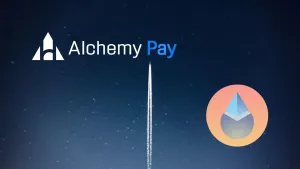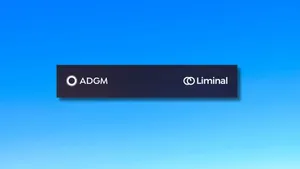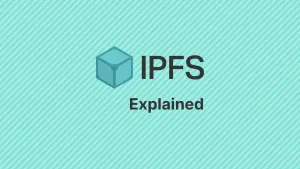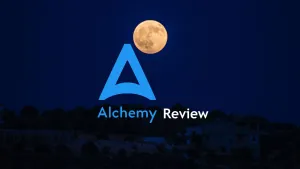The term Web3 can be used to define the upcoming phase of the Internet. Web3 will likely contribute to shaping the future of the Web. The foundations on which Web3 has been made are different from the current Web aka Web2.0
Web3 is expected to be an open-source platform that can be used to contribute and participate from any location or background. It will be more transparent and secure as it follows decentralized technology, which makes it hard to manipulate or breach the data. It also paves the way for innovations and new ideas on the platform.
Web3 provides control and ownership to the user. This gives users power and free will in the digital world as opposed to Web 2 and Web 1 which had restricted ownership.
Evolution of Web
Web3 network is an emerging technology but it proposes to change the future of the Internet by incorporating decentralized technology. Let's look at the evolution of the web from the Web1.0 in the 90’s to what it has turned into today.
Web 1.0 which was used from 1991-2005 was read-only. It provided limited information and no user interaction. Web1.0 lacked an algorithm because of which users struggled to find relevant information on the web. Users could only read content and not contribute any content to the websites. Data ownership was centralized to large institutions and corporations. This created a closed network.

Web 2.0 replaced Web 1.0 in 2005 and is presently in use. Web 2.0 emphasized more on participation and contribution which was possible because of the technologies such as JavaScript, HTML5, and CSS3. During this phase, users could create and share their content in the form of videos, posts, photos, and blogs.
Social media platforms like Twitter, Facebook, YouTube, and Instagram came on the rise which facilitated user interaction, community building, and sharing information. Data ownership was platform controlled by algorithms that were put into place.
Web3 is currently in its initial stage and is being built on the concepts of decentralization and blockchain technology. It will focus more on user ownership and control. In the future, Web3 will be governed by its users and community, making the platform distributed, transparent, and secure.
Web3 will have a significant impact on decentralized finance (DeFi). Users will be able to engage in online transactions without an intermediary, directly investing, lending, or borrowing on the blockchain platform. The use of NFTs as digital assets will create new ways for users to monetize their work. Web3 is also expected to facilitate the creation of decentralized marketplaces, helping both producers and consumers to receive fair prices for their goods and services.
The Core Features Of Web3
- Decentralized: Web3 uses blockchain technology which makes the network more distributed and secure. Data collected is stored on secure blockchain networks. Applications are built on an open protocol that anyone can access and contribute to. This increases the ability of the network to last.
- User-Ownership: Web3 provides higher user control over the data and content. Users can choose what applications they use, how they interact, or how their data is used. This enables users to control their assets and make decisions about how their data is used
- Connectivity: Web3 aims to be more accessible, providing seamless connectivity to different platforms, irrespective of location.
- Artificial Intelligence: Web3 will be using AI significantly in areas such as data analysis, smart contracts, and personal experiences. Since AI can understand large data generated and can help with automating tasks to improve user experience.
- Trust-Less Infrastructure: Web3 will be trust-less which means that users can interact with others without the presence of a middle person. Users would not have to get permission to access applications that previously required permission from a governing body.
Real-World Applications Of Web3
Even though Web3 is in its initial stage, it has the potential to change the current world greatly.
- Decentralized Finance: Defi can borrow, lend, and invest with others securely and transparently without an intermediary. This makes finance much more accessible and manageable. Recognizing the potential, multiple companies are investing in Defi.
- Cryptocurrency: The earliest use of Web3 can be seen in Crypto. The first digital currency, Bitcoin gave recognition to the potential of blockchain. Recent estimates show that about 36% of small companies in the US accept payment in Bitcoin. Many countries and companies have started accepting cryptocurrency as a payment.
- Gaming: Web3 allows the creation of games which are based earning tokens or digital assets through the game. This increases user engagement with the game. Certain in-game items could also be represented as NFTs which creates new ways for creators to earn from them and garner support from fans.
Tech Stack Of Web3 Consists Of 5 Layers
Layer 0: Infrastructure
The foundational layer of Web3 is primarily composed of blockchain infrastructure. It serves as the critical base upon which the entirety of Web3 is built and operates.
This layer comprises multiple elements such as mining as a service (MaaS), the network on which the web3 stack works, computing, nodes that act as interconnection between the network, and most importantly the storage.
Layer 1: Protocols
This layer powers the decentralized Web. The protocol layer forms the pillar of the tech stack by providing security and reliability to the network.
This layer consists of algorithms that ensure the nodes are in agreement with the blockchain. These algorithms add to the reliability of the network. Sidechains in Level 1 make sure that the tokens or assets are transferred between the blockchains. Virtual machines in this layer maintain the security of the network.
Layer 2: Utilities
Utilities layer provides functionality and effectiveness to the Web3 network.
One of the elements of this layer, multi-signature, provides security for the blockchain network. Every transaction that happens on the network requires a unique signature. Oracle supports smart contracts by feeding the data on the network. Wallets store the primary key of the user. Another element of this layer is distributed file storage, which provides a location for data storage. It facilitates easy access from the local computer.
Layer 3: Services
Services layer provides the essential elements to create and manage digital applications (dApps). Web feeds provide appropriate sources to update data. Governance in this layer gets rid of the necessity of human management. State channels in this layer initiate two-way communication between users during a transaction.
Layer 4: Applications
This layer enables the use of decentralized apps (dApps) for elements such as dApps browsing, where users can access dApps from specialized browsers such as MetaMask. Another element of this layer is Application hosting, where the user can host dApps after they are downloaded from the dApps browser. The element is made available through the cloud storage from layer 0.
Conclusion
The potential of Web3 can change the way we interact with the world around us. As the technology gains traction, we will be able to see more real-world applications and use cases. Web3 is a revolution in the online world. It’s a move towards a more transparent, user-centered, and secure future of the web.






